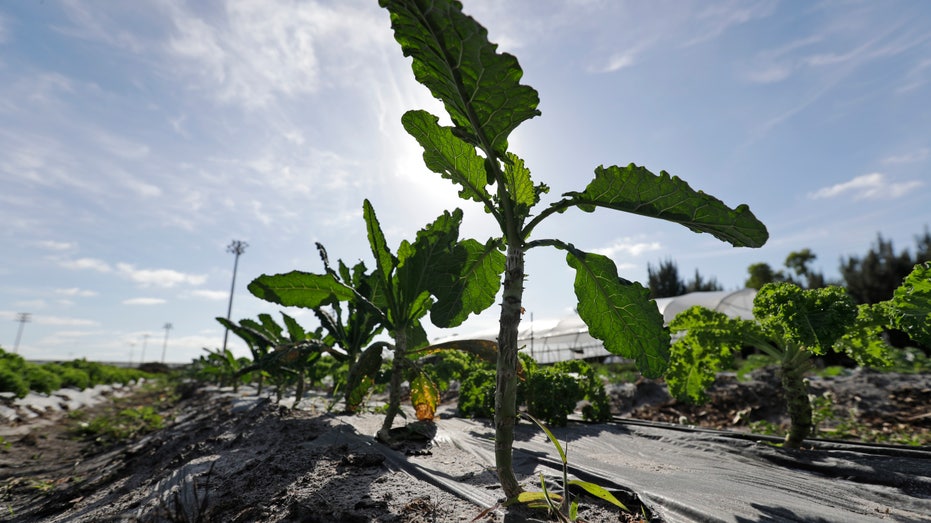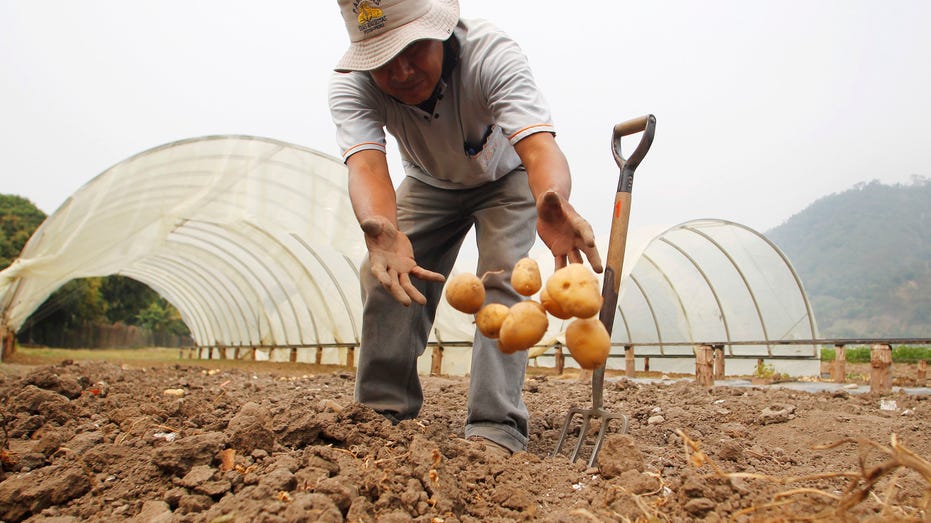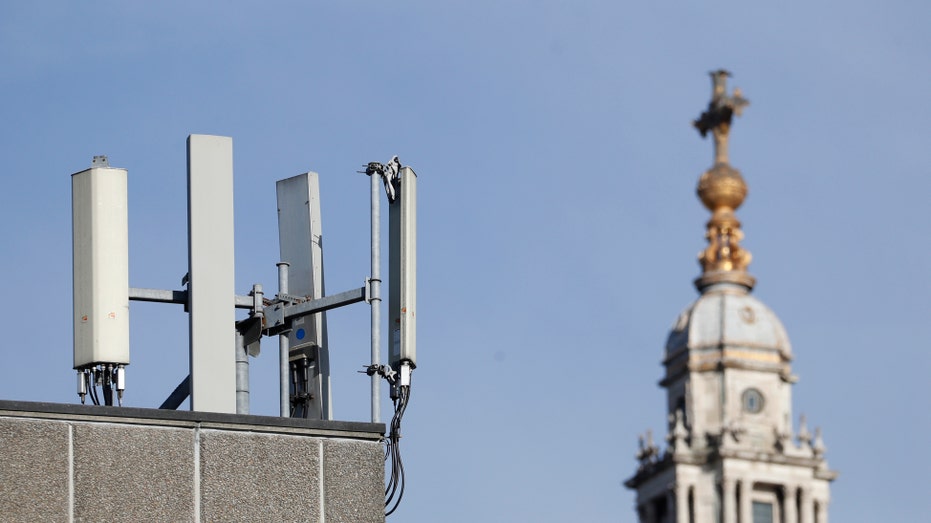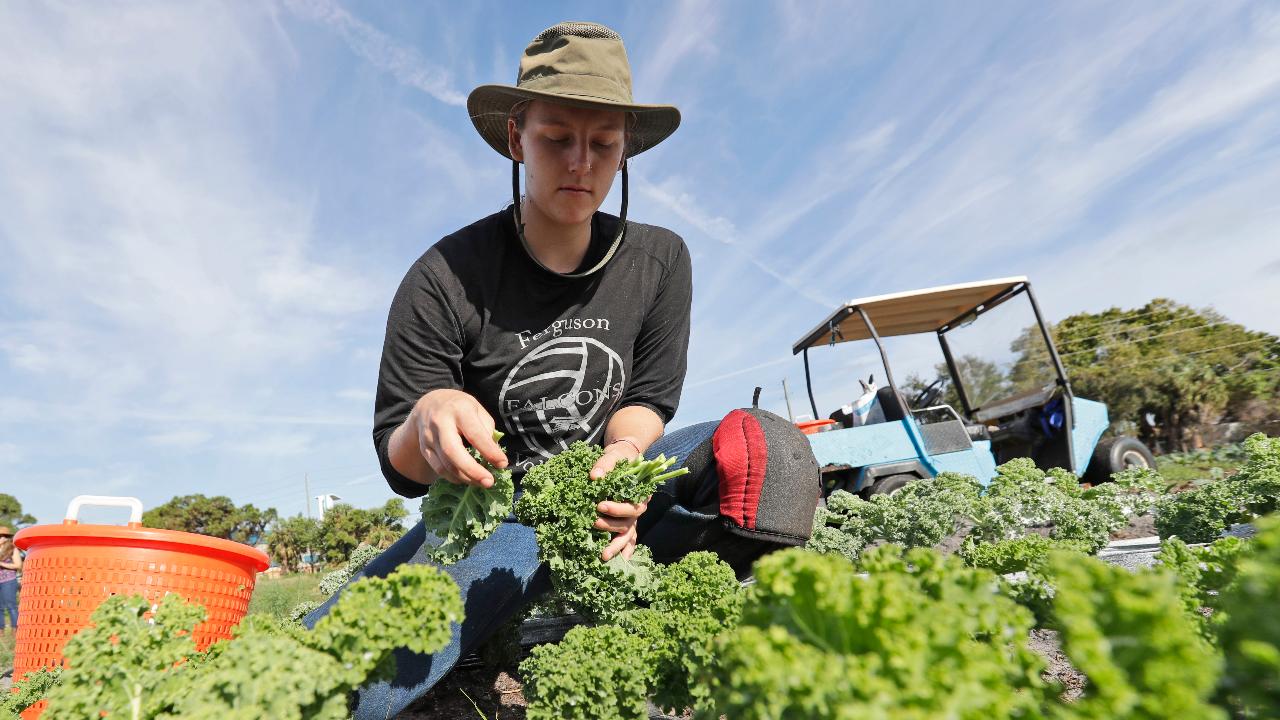How will 5G impact US agriculture?
5G will help farmers cut wasteful spending on unneccessary water, pesticides and fertilizer
Fifth-generation, or 5G, wireless technology is expected to improve many aspects of technology across a number of industries.
5G is expected to help develop artificial intelligence technology like self-driving cars and health care technology like cloud databases.
When it comes to agriculture, 5G will help farmers assess the conditions of their fields and produce like never before.
"There are a lot of different reasons for farmers to use more data to make their decisions more precise," Ash Madgavkar, founder of aerial spectral imagery company Ceres Imaging, told FOX Business. "5G is an enabler of that. It's helping the imagery to adapt to a very quickly-changing environment."
Because 5G infrastructure uses both cell towers and antennas attached to houses, buildings, telephone poles and other nearby objects, the radio waves that make up 5G wireless are smaller and deliver a faster connection, enabling technology to deliver material from video footage to other data almost instantly.
5G will help farmers cut wasteful spending on unnecessary water, pesticides and fertilizer and reduce harm on the environment through precision agriculture — or the act of assessing specific acres or even plants.
Ceres Imaging has been experimenting with 5G for several years, Madgavkar said.
He explained that while he was involved in agriculture work in South America, he noticed how broad farming techniques that treat every field and plant the same way lead to inefficiency and waste, which, in turn, can have a negative impact on the environment.

In this, Wednesday, Feb. 5, 2020, rows of kale are shown on an organic farm in Opa-locka, Fla. (AP Photo/Wilfredo Lee)
"Applying the same amount of something to every different plant is impractical," he said.
While some farms use drones to get aerial images of fields and crops, Ceres Imaging does it the new, old-fashioned way with fixed-wing aircraft to produce more accurate images.
STEVE MOORE: THE 5G GLOBAL TECHNOLOGY RACE IS VITAL FOR OUR FUTURE
By combining 5G technology with these aircraft, as well as through sensors spread across the property, the company can deliver a more vivid look at individual plants to determine what materials certain areas of a farm need.
"5G will accelerate the transformation of precision agriculture," he said. "Farmers are going from managing fields on broad scales to managing down to individual acres or plants. It's a transition from the old way of farming to the new way of farming."

A worker of the International Potato Center harvests potatoes grown for two months without water at an experimentation station in San Ramon in Peru's central jungle on August 27, 2010. REUTERS/Enrique Castro-Mendivil
In extreme weather conditions, too, 5G can be of use when farmers need to assess where they can afford to save water during a drought, for example.
5G will also help farmers communicate their own man-made assessment and prediction data into a cloud database that will then be analyzed and adopted by other technology.
As Federal Communications Commission Chairman Ajit Pai said during a February interview with "Fox News Headlines," farmers will need "to be able to load a lot of data into the cloud, have it analyzed and sent back down to the combine or the ranch hand," which is "the kind of thing 5G can do."
Madgavkar gave the example of a potato field in Idaho.
"If we are flying over a potato field in Idaho that has four moisture sensors in it, and it's irrigated through a center pivot, some of those [irrigation pivots] have more new and intelligent control systems to change how much water a nozzle is applying in a specific area," he said.
"If we can show where the areas of the field are that are under and overwatered and use information from a local weather station and other data and feed it back into a control system, we can make a more efficient, better overall farming experience," he continued.
While 5G has not been deployed in the majority of rural areas mostly connected by small telecom companies, Madgavkar said he doesn't think the rollout of 5G in rural communities will take longer than two years.
The transition, however, has been complicated because many small telecom companies in these areas of the U.S. have been told to replace and repeal their 5G infrastructure.
WHEN WILL THE US HAVE 5G TECHNOLOGY?
Many small, rural telecom providers use equipment from Huawei because it is cheap, effective and lightweight, but the U.S. has barred the company from doing business in the country due to its reliance on the Chinese government and its leaders' ties to the Chines Communist Party.
Now, the Trump administration is moving to provide funding to small telecom as providers to alleviate the costs of replacing equipment made by China's Huawei since it has been designated a national security threat.
"Huawei and ZTE have been initially designated as threats to national security," Pai said in a February statement.

Mobile network phone masts are visible in front of St Paul's Cathedral in the City of London, Tuesday, Jan. 28, 2020. (AP Photo/Alastair Grant)
"Given that those designations may become final this spring, we are moving forward quickly to identify where equipment and services from these suppliers are embedded in our communications networks and, where they do have a foothold, to be in a position to help remove them," he added.
Pai in December unveiled a $9 billion plan to deploy 5G mobile wireless services in rural America after removing Huawei and ZTE equipment.
"I will move forward as quickly as possible to establish a 5G Fund that would bring next-generation 5G services to rural areas," Pai said in a statement at the time.
In addition, he added that the FCC "would reserve some of that funding for 5G networks that promote precision agriculture."
The Rural Wireless Association, a lobby group that represents 50 wireless providers with less than 100,000 subscribers, has said that 25 percent of its carrier members would be impacted by a ban and replacement of equipment from the Chinese companies.
GET FOX BUSINESS ON THE GO BY CLICKING HERE
The RWA estimates that it would cost its members $800 million to $1 billion to replace equipment from Huawei and ZTE.
Pai's plan would alleviate the high cost of replacing the equipment and would hasten rural America's 5G access. Through the FCC's Universal Service Fund, up to $9 billion would be made available and would "target hard-to-serve areas with sparse populations and/or rugged terrain," according to the FCC's press announcement.




















